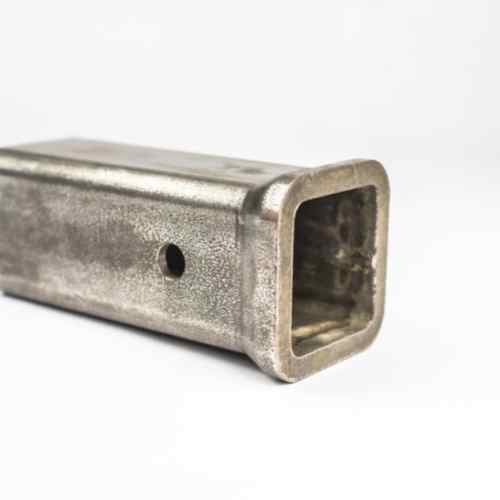Common Mistakes When Specifying Specialty Fasteners & How to Avoid Them
As engineers, we know that specialty fasteners—such as custom bolts, screws, and threaded components—are the unsung heroes of mechanical assemblies.
These critical elements ensure structural integrity, load distribution, and long-term reliability in everything from aerospace systems to heavy machinery. However, even small errors in specification can lead to assembly failures, increased downtime, or costly rework.
Drawing from established standards like ASME, ASTM, and ISO, this post highlights common pitfalls in specifying specialty fasteners and provides practical strategies to sidestep them.
By focusing on precision engineering, tolerance classes, and material properties, you can optimize your designs for performance and compliance.
Overlooking Applicable Industry Standards for Specialty Fasteners
One frequent error is neglecting to reference the appropriate standards for threaded fasteners, bolt tolerances, or mechanical properties during the specification phase. Without these guidelines, you risk incompatible parts that fail under stress or vibration.
This oversight often results in inconsistent quality, poor thread engagement, or non-interchangeable components, complicating supply chain management and assembly processes.
To avoid this:
- Always cite the relevant standard upfront. For metric threaded fasteners, use ISO 898 for mechanical properties and ISO 965 for basic dimensions and tolerances. For inch-series bolts, refer to ASME B18.2.1 for dimensions and ASME B1.1 for unified screw threads.
- Incorporate these into your engineering drawings and procurement documents to ensure suppliers adhere to standardized fastener dimensions and performance criteria.
Ambiguous or Incomplete Dimensional Specifications
Engineers sometimes provide vague details on key attributes like thread pitch, pitch diameter, or surface finish, assuming suppliers will fill in the gaps. This can lead to mismatches in fastener geometry, affecting load-bearing capacity and fatigue resistance.
The fallout? Assemblies with excessive play, thread stripping, or premature wear, especially in high-vibration environments.
Prevent this by:
- Detailing every dimension explicitly. Specify pitch diameter and tolerance class per ISO 965 (for metric) or ASME B1.1 (for inch), and include surface roughness requirements from ASME B46.1.
- Use clear annotations on blueprints, including head style, shank length, and thread form, to align with standard fastener terminology and reduce misinterpretation.
Ignoring Tolerance and Fit Considerations for Specialty Fasteners
Defaulting to loose tolerances without evaluating the application's needs—such as interference fits or clearance requirements—can compromise assembly precision. This mistake often ignores how tolerance classes impact thread engagement and overall system stability.
Consequences include jamming during installation, loosening over time, or reduced shear strength in critical joints.
Address it effectively:
- Select the appropriate fit class based on load and environmental factors: for example, 6g/6H for general metric applications (ISO 965) or 2A/2B for standard inch fits (ASME B1.1). For high-precision needs, opt for tighter classes like 3A/3B.
- Perform tolerance stack-up analyses early in the design phase to ensure compatibility with mating parts.
Improper Material or Property Selection
Choosing materials without considering corrosion resistance, tensile strength, or environmental exposure is a common misstep. For instance, specifying a low-grade alloy in a corrosive setting overlooks how material properties influence durability.
This can result in rust, embrittlement, or failure under load, leading to safety risks and unplanned maintenance.
Mitigate this by:
- Referencing material standards like ASTM A193 for high-temperature bolts, ASTM A320 for low-temperature applications, or ISO 898-1 for property classes (e.g., 8.8 or 10.9 for high-strength steel).
- Factor in coatings for enhanced protection, using ASTM F1941 for electrodeposited coatings or ISO 4042 for electroplated options, tailored to your operational conditions.
Inadequate Documentation and Traceability
Failing to demand comprehensive documentation, such as material certificates or batch traceability, leaves gaps in quality assurance. Without these, verifying compliance with fastener standards becomes challenging.
This error can hinder root cause analysis during failures or audits, potentially violating regulatory requirements in industries like automotive or medical devices.
Ensure robustness by:
- Requiring traceability reports that align with ISO 9001 quality management principles, including batch details and test data.
- Insist on certificates confirming adherence to ASTM or ISO material specifications, maintaining a clear chain of custody from supplier to end-use.
Not Specifying Required Testing or Certification
Omitting specific testing protocols—such as tensile testing or hardness checks—assumes generic supplier processes will suffice. This overlooks the need to validate mechanical properties, such as yield strength, for specialty applications.
The result? Subpar fasteners that underperform, causing assembly weaknesses or non-compliance with design specs.
Overcome this by:
- Mandating tests outlined in standards like ASTM F606 for mechanical testing of fasteners or ISO 898-1 for proof load and hardness requirements.
- Include certification clauses in your specs, ensuring suppliers provide documented results for each batch.

Specifying specialty fasteners demands meticulous attention to standards, dimensions, and testing to achieve optimal performance in engineered systems.
By avoiding these common mistakes and leveraging guidelines from ASME, ASTM, and ISO, you can enhance assembly reliability, reduce costs, and ensure compliance.
Remember, partnering with an ISO-certified supplier like Blue Chip Engineered Products amplifies these benefits through expert guidance and vendor-managed inventory solutions.
For your next project, double-check your specs against these standards to build stronger, more efficient designs.
References:
-
ASME B1.1, Unified Inch Screw Threads (UN and UNR thread form)
-
ASME B18.2.1, Square and Hex Bolts and Screws (Inch Series)
-
ASME B46.1, Surface Texture (Roughness, Waviness, and Lay)
-
ASTM A193/A320, Alloy-Steel and Stainless Steel Bolting
-
ASTM F593, Stainless Steel Bolts, Hex Cap Screws, and Studs
-
ASTM F1941, Electrodeposited Coatings on Mechanical Fasteners
-
ASTM F606, Mechanical Testing of Fasteners
-
ISO 898-1, Mechanical Properties of Fasteners Made of Carbon Steel and Alloy Steel
-
ISO 965, ISO General Purpose Metric Screw Threads—Tolerances
-
ISO 4042, Electroplated Coatings on Threaded Fasteners
-
ISO 9001, Quality Management Systems



.jpg?width=500&height=500&name=weld%20products_iso%20certified%20fastener%20supplier_blue%20chip%20engineered%20products%20(1).jpg)
